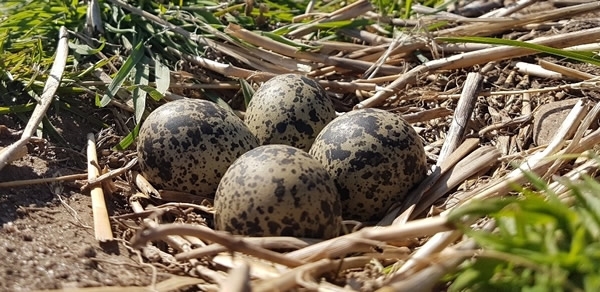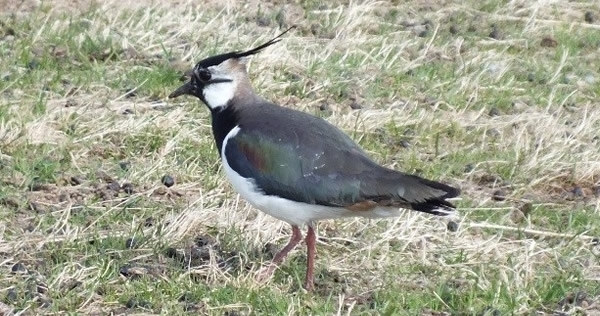
By Dr Dave Parish, Head of Scottish Lowland Research Project
It’s that time of year again when Auchnerran starts to come alive with the sounds of various species of wading birds, all proclaiming their territorial rights and starting to breed. We have reported before how Auchnerran seems to be a haven for waders – in 2017 we estimated that we had well over 130 nests of Lapwing, Oystercatcher, Curlew, Snipe and Woodcock, and it looks like we may be heading for the same sort of numbers again.
Our first Lapwings and Oystercatchers began nesting in earnest in mid-April, after the late cold-snap had passed. At the time of writing, we have 53 active Lapwing nests alone, and are finding more new nests every day.

Male Lapwing foraging at GWSDF Auchnerran. Credit Marlies Nicolai/GWCT
This is an important year for our wader research at Auchnerran. We are planning to step-up our monitoring to try to learn more about three species in particular: Curlew, Snipe and Lapwing. Much has been said of late about the Curlew, with World Curlew Day held recently (21 April) highlighting the plight of this ‘species of greatest conservation concern in the UK’.
At Auchnerran we will keep a very close eye on our breeding territories to try to assess breeding success, and we hope to GPS-tag some females, if we can raise the appropriate funds, so that we can follow their movements on the breeding grounds and afterwards. It is assumed that a major part of the problem Curlew face is reduced breeding productivity, particularly due to predation of nest contents, and this project would help clarify this.
Concern is mounting too for Snipe, which suffered a 91% decline across the UK between 1975 and 2008, although seemed to be increasing in Scotland at the back-end of this period – at which point the species was so scarce it became impossible to monitor via the standard methods, which is why we don’t have more recent population-trend data.
Again, we are lucky enough to have a reasonable population at Auchnerran, although this species is hard to count because of its secretive nature, so we plan to put much more effort into this in 2018 – watch this space! We hope that this extra effort, and a little luck, will allow us to more accurately assess our population and help us find some nests for monitoring.
In contrast the Lapwing is relatively easy to monitor with its nests usually found in our pastures. We know from the last couple of years that Lapwing productivity at Auchnerran is high, with at least one chick usually fledging per nest each year. However, we want to understand what lessons we can learn from here that might help managers elsewhere, so we hope to radio-tag some chicks and document their movements and survival rates.